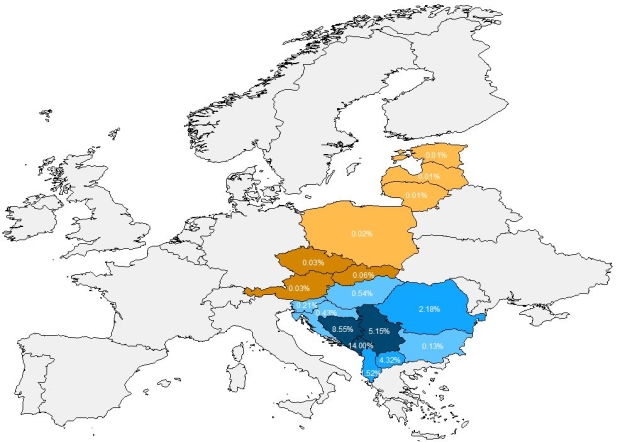Western Balkan Countries to profit from Belt and Road Initiative
15 May 2017
On May 14 and 15, Beijing is hosting the Belt & Road Forum for International Development. Economic gains of the initiative for the Western Balkans are potentially huge, but several key issues still need to be resolved.
China’s Belt and Road Initiative (BRI) includes several infrastructure projects in the Western Balkans that may provide a development push for the region. BRI was initiated in 2013 by China’s president Xi Jinping is an investment initiative stretching over Eurasia and Africa. The upcoming Belt and Road Forum in Beijing on May 14 and 15 might prove to be one of the major diplomatic events in 2017 with more than 1,200 participants, including heads of state from at least 28 countries and representatives of the United Nations, the World Bank and the International Monetary Fund.
Author: Julia Grübler
BRI investments primarily focus on the Chinese neighbourhood, notably Pakistan. Planned infrastructure investments extend beyond transport infrastructure. The energy sector is still the most important sector for investments, concerning not only gas and oil pipelines but also the construction of thermal, hydroelectric, coal-fired or nuclear power plants. By May 2017, the Asian Infrastructure Investment Bank (AIIB) had approved 13 projects in Azerbaijan, Bangladesh, India, Indonesia, Myanmar, Oman, Pakistan and Tajikistan – 10 of them can be explicitly assigned to the transport or energy sector. Whether projects financed by the Silk Road Fund will show similar regional and sectoral patterns still needs to be seen. China has several objectives, including to reduce overcapacities in the domestic market and to achieve more balanced internal economic development with increased investment going to the Western parts of the country. But the initiative clearly also has external development goals with a very long-term perspective. It could, in fact, be seen as a new ‘Marshall Plan’ for the Asian continent.
The Western Balkans are positioned at the European end of BRI. Investments in this region are not as substantial in size as in the immediate Chinese neighbourhood but they are very relevant for these countries that still have a huge gap in infrastructure. The takeover of a majority share in the Greek harbour in Piraeus marks the beginning of a transit route via the Western Balkans, with motorways and railway links (notably a high-speed railway between Belgrade and Budapest), improving overland connections between Piraeus, the Balkan Peninsula and Western Europe. Together with the construction of nuclear and thermal power plants, current projects amount to more than EUR 10 billion. Potential economic gains for the Western Balkan countries are sizeable. wiiw calculations show an increase of 1.5% of GDP for Albania to one of 14% for Montenegro (see map below) which could materialize over several years. A coordination of efforts between the European side (the Berlin Process and TEN-T projects) and BRI would be of great importance.
However, the ‘New Silkroad’ is still bumpy. Despite the expected overall positive economic impacts of the Chinese initiative for investment-receiving regions, various concerns have been raised with respect to environmental policy, the overall financing of investments, the Chinese dominance in such projects, and related trade flows. Furthermore, several trade-related issues, including access to the Chinese market, still need to be resolved.

